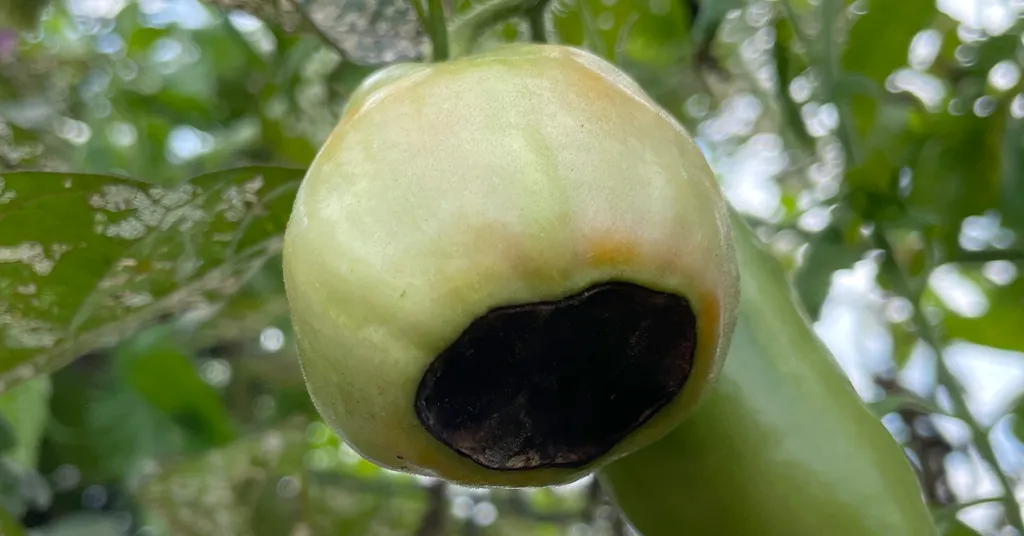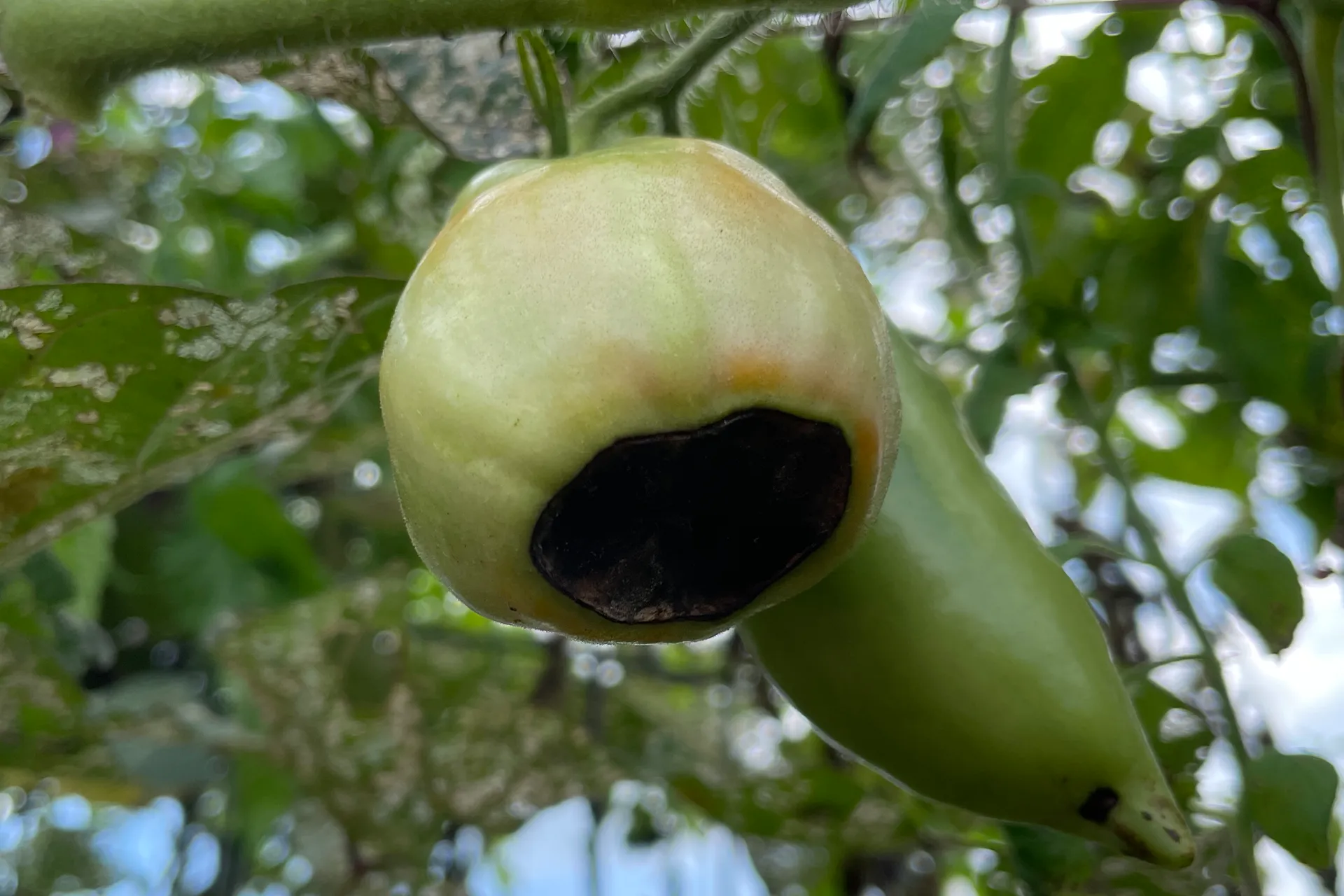This post may contain affiliate links. When you purchase through links on my site, I may earn a commission at no cost to you. See my Privacy Policy for details.
Blossom end rot is a common garden issue that comes up for many new gardeners. Blossom end rot can occur in tomatoes, peppers, squash, eggplants, and sometimes melons. I have seen this problem in my garden many years and it is frustrating to lose some of the harvest you have been working so hard to grow.
What is Blossom End Rot?
Blossom end rot occurs on the fruit produced by the plant on the blossom end (bottom of the fruit). It starts out looking like the end of the fruit has a water spot. That water spot will turn brown/black and will become leathery. The fruit will then begin to rot on the plant. You should pick these fruits off and discard them (you can save seeds from these fruits as this trait will not be passed on to the next plants).
Blossom end rot is caused by an imbalance of calcium in the plant. This could be caused by not having enough calcium in your soil (this can be easily tested with a soil test). It could also be caused by the plant not being able to take up calcium from the soil. The amount of water available to the plant affects its ability to absorb the nutrients it needs for plant and fruit growth. When there are wide fluctuations in soil moisture it causes the plants to not be able to take up the calcium needed and can cause blossom end rot.

How to Prevent Blossom End Rot?
Consistent soil moisture is extremely important to prevent blossom end rot. This may be an issue you need to combat every year. Most gardens get consistent moisture in the spring with more rain but as you move into the summer months and it gets much warmer it is easier for the soil to dry out. This inconsistent moisture can cause the plants to not be able to absorb the calcium they need. Using a soaker hose or a drip irrigation system to water your plants can help prevent blossom end rot because it can provide consistent moisture. You can also use mulch around the bottom of your plants to maintain soil moisture.
If you performed a soil test, ensure you follow the directions of adding the correct nutrients to your soil as required. Having a consistent soil pH of around 6.5 will also help with the plant’s ability to absorb nutrients in the soil. If you are using new store-bought soil it likely has enough calcium in the soil. If you have been gardening with the same soil for a while make sure to perform a soil test. Review the test results and add whatever has been depleted from your soil.
Can it Spread from Plant to Plant?
Blossom end rot can not spread from plant to plant or tomato to tomato. You should remove the affected fruit so that the plant can continue to put its energy into growing more fruit. Watch for signs of stress in your plant and ensure to check the moisture daily.
Solving this issue can lead to many great harvests. Need some additional gardening inspiration? Read about different types of tomatoes here: Determinate and Indeterminate Tomatoes. I hope this information can assist you in your garden if you ever encounter blossom end rot.

